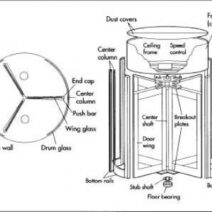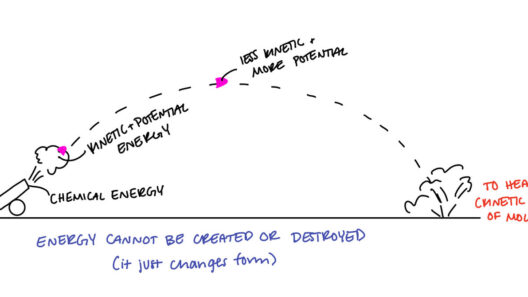The question of whether kinetic energy is conserved in two-body collisions often leads to myriad discussions and explorations in the realm of physics. One may ponder, “What happens to the energy during these interactions?” To answer this, it is essential to understand the principles of conservation laws, types of collisions, and the implications of energy transformations that occur during such events.
Kinetic energy, a fundamental concept in physics, refers to the energy of an object due to its motion. It is calculated using the formula ( KE = frac{1}{2} mv^2 ), where ( m ) represents mass and ( v ) is the velocity of the object. But the intrigue begins when analyzing collisions—events where two bodies interact and exchange energy and momentum.
To classify the events occurring in two-body collisions, we consider two principal categories: elastic and inelastic collisions. In elastic collisions, not only is momentum conserved, but kinetic energy, too, remains invariant. This implies that post-collision, the total kinetic energy of the two colliding bodies is equal to their total kinetic energy before the collision.
Imagine two perfectly spherical marbles colliding on a frictionless surface. In this idealized scenario, with negligible external forces and perfectly elastic properties, the momentum and kinetic energy before the collision equate to the values after the collision. Hence, energy preservation manifests beautifully, as each marble retains its kinetic energy—or transfers it entirely to the other marble, with no losses. One might marvel at how such collision mechanics operates seamlessly under ideal conditions.
On the contrary, inelastic collisions present a different narrative. Here, momentum is still conserved, but kinetic energy is not. In these types of collisions, the objects may deform or generate heat, leading to an apparent loss of kinetic energy, which transforms into other energy forms. This scenario resembles two clambering clay figurines that squish against each other, amalgamating rather than bouncing apart. The kinetic energy diminishes, dissipating into thermal energy or sound, showcasing how energy adopts alternative forms during motion!
The exploration of two-body collisions leads us into the realm of real-world applications and implications. Consider a vehicle collision. Most collisions are inelastic in nature, where both vehicles crumple upon impact. The kinetic energy that existed prior to the collision transforms into sound energy, thermal energy from the crumpling metal, and energy dissipated as the vehicles come to rest. Would one not ponder the extent of energy transformation as the kinetic energy dissipates under such conditions?
While diving deeper into the intricacies of energy conservation, one must also recognize the significance of the center of mass in a two-body system. The center of mass acts as a pivotal reference. During a perfectly elastic collision, the combined motions centered around this pivotal point maintain the kinetic energy. Nonetheless, discussions about real-world collisions often conclude that they veer towards the inelastic format, where some energy vanishes from the kinetic pool.
The Law of Conservation of Momentum, however, remains steadfast in both types of collisions. Momentum (given by the product of mass and velocity) must remain constant in isolated systems where no external forces act. Thus, while kinetic energy may not be conserved in inelastic collisions, momentum provides a reliable constant that governs the motions of objects before and after collision events.
Furthermore, the loss of kinetic energy during inelastic collisions invites contemplation on efficiency within mechanical systems. Engineers must think critically about energy losses when designing vehicles, machinery, and safety systems. Protective features such as crumple zones in automobiles are specifically devised to absorb energy and lessen the force transmitted to occupants, redirecting destructive kinetic energy into deformable structures instead of human bodies, evidencing the practical outcomes of energy transformation dynamics.
A playful question arises: Has anyone considered the broader ecological implications of energy conservation, or lack thereof, during such collisions? Think of how kinetic energy in vehicles—and the resultant energy losses during inelastic crashes—significantly influences fuel consumption and environmental outcomes. Limiting inelastic collisions through improved design means reduced energy waste, less fuel consumption, and lower carbon footprints in transportation sectors.
In conclusion, the exploration of kinetic energy conservation in two-body collisions reveals a multifaceted understanding of physical principles and their implications in both theoretical frameworks and practical applications. While kinetic energy is conserved in elastic collisions, inelastic collisions introduce a contrast where energy dissipates, showing the transformative nature of energy itself. Recognizing these distinctions provides insight not only into the physical laws governing motion, but also into how they resonate within the larger conversation surrounding conservation and efficient energy use in our daily lives. Ultimately, the contemplation of energy conservation serves as a reminder of the importance of understanding our energy interactions and their vast implications in the world around us.








